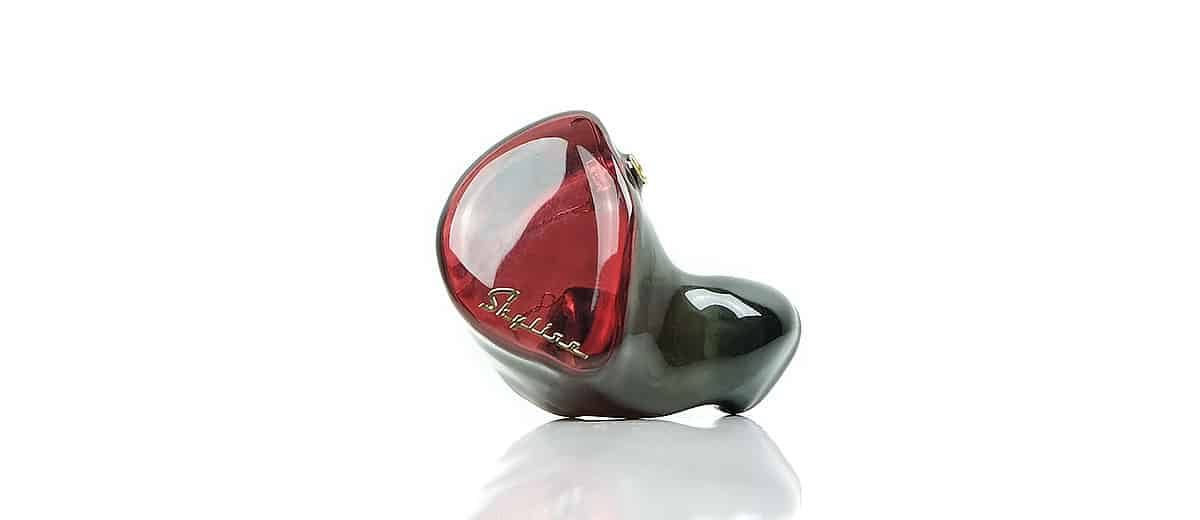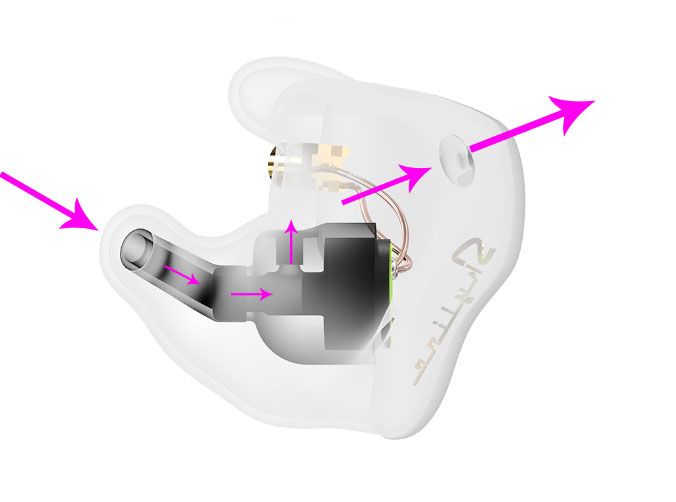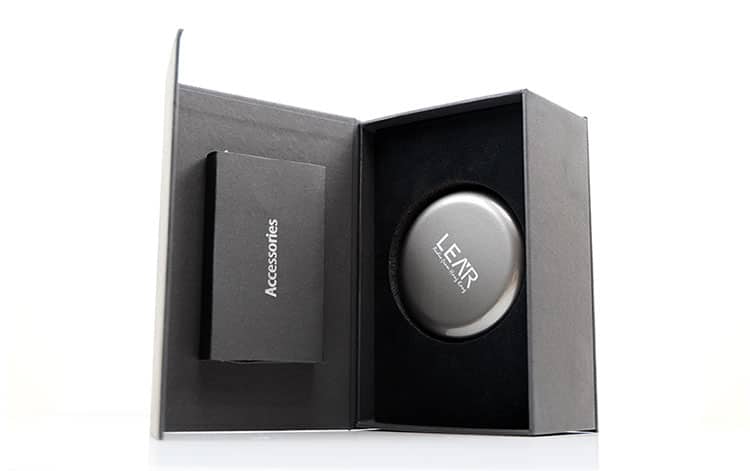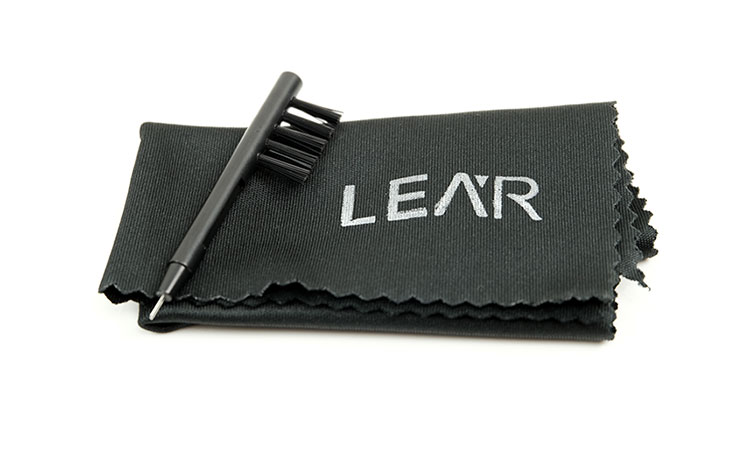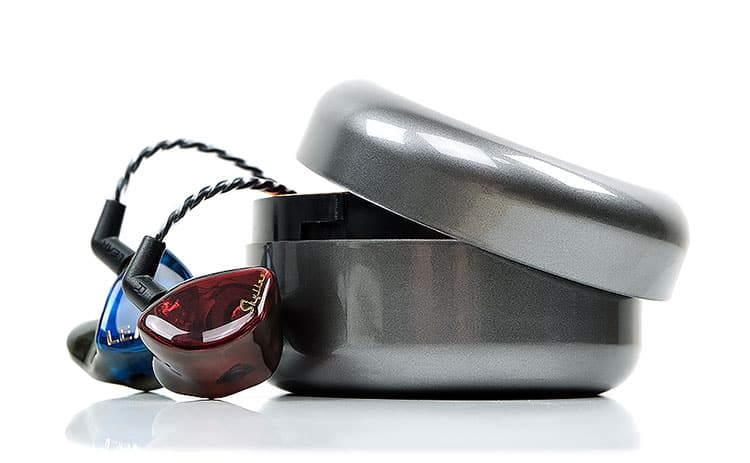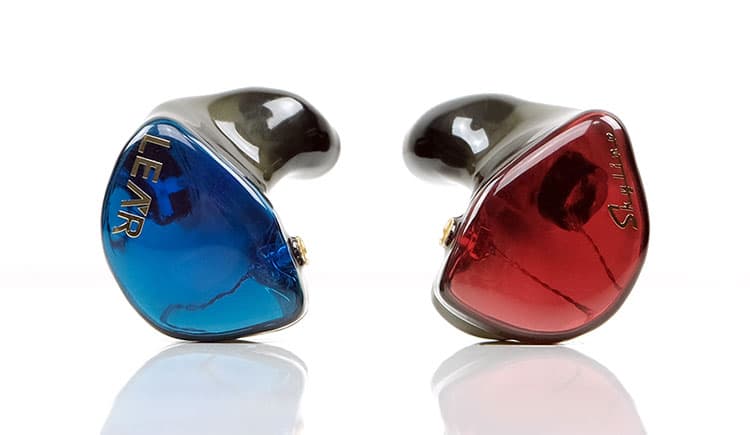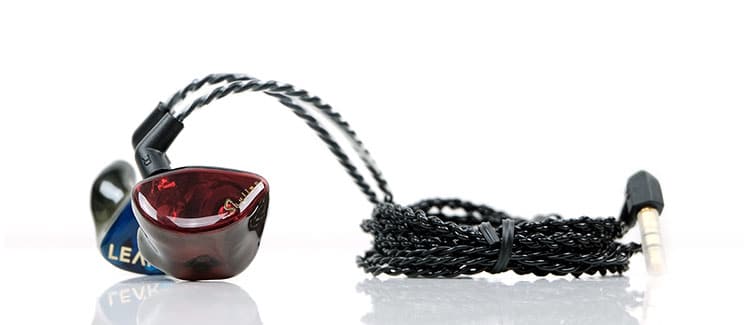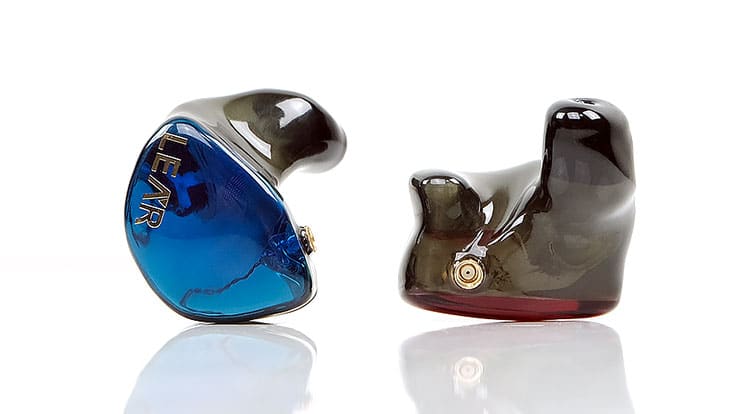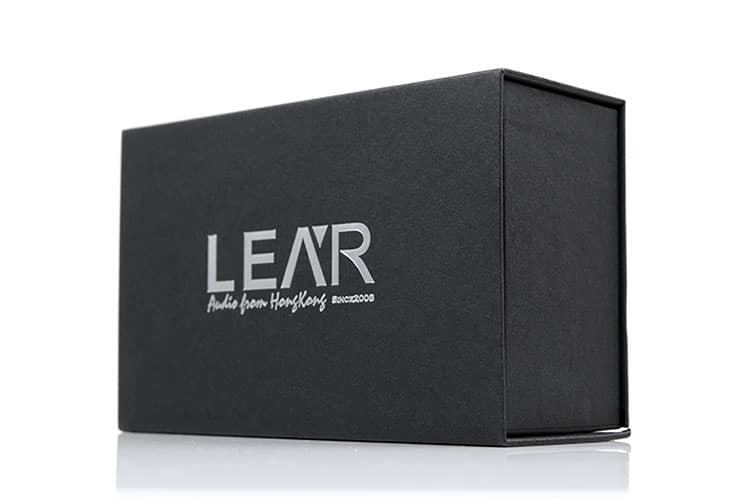The Lear LCM-Skyline is a new custom monitor featuring an 8mm PEEK diaphragm single dynamic driver and a balanced in-ear pressure relief system. This retails for HK$1,688.00 or approximately $215 making it one of the best value custom IEMs in the market today.
Disclaimer: The Lear LCM-Skyline sent to us is a sample in exchange for our honest opinion. We thank the team at Lear Audio for giving us this opportunity. To read more about Lear products we reviewed previously on Headfonics, click here.
Customs often are seen as a luxury item, something a bit more expensive than the norm and require a touch more patience to the final product. The payoff is almost always a very comfortable fit with excellent isolation. If you are lucky enough it also should sound way better than any universal version.
Well, how about a custom monitor at just $215? That is about as competitive as you can get in a market that often charges in excess of $1000. Lear has done just that with the LCM-Skyline, which dropped into our office just this week.
However, to think the main selling point is the extremely affordable price point would be an oversight. There are a number of other interesting features packed into the Skyline that make this custom worth considering.
Tech Inside
The Skyline keeps it simple with a single 8mm dynamic driver with no crossovers or multi-BA hybrid builds. This is just the second single dynamic driver custom we have tested, with the first being the far more expensive $1499 Campfire Audio Equinox.
PEEK
This mid-sized custom-tuned dynamic driver is finished with a PEEK diaphragm which is similar to the one inside the Echobox Finder X1 we reviewed a few years back.
German-made PEEK diaphragms are used for their purported superior dynamics and detail to regular diaphragms. PEEK (polyetheretherketone) is a semi-crystalline, high-temperature (up to 500° F) engineering thermoplastic. It is designed to be tough, strong, and rigid and has superior creep resistance against any kind of distortion when under a load over an extended period of time (no burn-in required?).
Balance In-Ear Pressure
In summary, this is a small mechanism inside the Skyline which helps balance in-ear pressure and reduces potential long-term damage to your hearing. Something I am hugely in favor of.
If you are like me and have a set of monitors in your ears most days then you either get a pressure relief system like this or turn the volume way down. This will allow you to play at a decent level without too much pneumatic air pressure hitting your eardrums which is often where the damage starts.
This kind of system I normally see in $700 plus systems from the likes of 64 Audio and Unique Melody so to see one in a CIEM at this price point is a welcome bonus.
Hearing Care
This seems to be something that is still being refined but it is applied to the Skyline. The board concept is a zone where excessive dB emphasis in the frequency response of any monitor will cause potential long-term damage to your hearing.
The Skyline has a specific curve but no point in the curve goes beyond what is considered as excessive. Normally this centered either on the mid-bass, upper-mids or upper treble around 7-10k. IN these areas, the Skyline has some bumps, but nothing beyond I believe a +6dB rating.
Unboxing
Do not expect a deluxe unpacking experience for customs at $215. Something has to give and with the Skyline, you do not get a huge outlay of accessories or a super fancy box. That being said, its actually on par with the likes of the Kaleido and Turbo’s professional flip-top black retail box with the Lear branding to the front and center.
Accessories
Inside, you get the accessories envelope stuck under the lids and a plastic shiny round pill-case inset into a protective foam layer. Everything else including the Skyline and detachable cable is inside the carry case itself. This includes a cleaning pick and a soft velvet cloth.
The case is a little on the large size for day to day carrying unless you throw it into a bag. It is also stiffened plastic with a chrome finish rather than aluminum but it feels sturdy enough and there is plenty of room to throw in a few cables, tips, and drivers.
These AC-1 cases also used to be lined with a green rubber shock-absorbing material but this now comes with an orange version which nicely matches our branding colors. Of course, being a custom there is no need for additional tips since these should fit your ear perfectly.
Design
Now to keep that juicy $215 price tag you do have to strictly follow the checkout options for your final design. I will go into this in more detail in the main review but the choices are slightly limited. Partly due to the 3D-printing process Lear has started using and partly due to keeping costs tight.
For the basic price, you get an option of transparent, opaque and glitter black shells as well as faceplates that can be any standard transparent or opaque color on offer. Anything else and you go up in HK$498 increments per side which is about $63 per side. Once you go down that road the value proposition starts to fade. As you can see in our chosen design of a simple opaque red and blue there is no need to shell out anymore to get an attractive design.
Still, it could be worth it because that is what custom design is all about and the finish on these looks really nice with that blue and red color seeping down into the black opaque shell and giving them a gentle individual hue.
Compared to other custom multi-BA driver or hybrid designs the Skyline is a fairly deep design so these will stick out of your ear a little but not overly so. Not a flush to the outer ear design though. The actual finish is as smooth as you like with no bubbles or quirks in the 3D printing or faceplates. Each monitor can be adorned with Lear and Skyline on the left and right but there is no serial coding on the inside.
Cable & Connectors
Connectors
The Skyline is terminated with MMCX connectors as standard and designed to be worn over the ear. There is a choice of 2-pin but you have to request this specifically via email. I know Lear is a big supporter of MMCX as their main connector and they do look to have a high level of machining.
Like Campfire Audio, Lear uses a beryllium copper MMCX socket material so these things are good for detaching and attaching for a much longer period than standard brass connectors. The connectors are also the newer round-type which I have started to see on a few new builds such as the Polaris II and IO from Campfire. They look a lot tidier than the older odd-shaped sockets.
Stock Cable
The 1.2m stock C2MKIII cable is a little thicker than a standard 4-core Plastics One cable but as far as I know, it is a high-quality SPC wire with a fairly tightly braided black jacket and some generous transparent memory-wire. The connectors are slightly right-angled to allow the cable to flow better around the ear when worn. All connectors and barrels are made of solid rubber with decent strain-relief and the jack is a right-angle gold-plated 3.5mm TRS 2-pole.
Physically I have no complaints thus far with the quality of the cable build. It is fairly light with no microphonics that I can really detect below the splitter. It has a nice pliant quality to it so it will not tangle or kink during prolonged storage.
As to its performance level, we shall find out in the main review. I suspect there are better performing cables but would you want to spend $100-200 to max out a $215 custom? I am not so sure. One worth trying might be FiiO’s LC-2.5 8-core SPC cable which won’t break the bank at $60.
In The Ear
Ultimately a custom fit depends on the quality of ear impression and the final design. No two designs will be the same. I tend to cut the corners by sending in existing STL digital files. This saves on the cost of new impressions and the postage to Lear. I do suggest you refresh those files once every year or two to account for any physical changes in your ear canal.
For the Skyline, I do find this a fairly large custom but the fit is very good with just a slight emphasis on a thicker nozzle width pressure but actually, that’s a good thing. You want that seal to be as good as you can get due to the balanced pressure system that creates a venting system as well as to allow the dynamic driver to breathe. So the seal will not be quite as good as a perfect fitting BA design which does not require a vent.
Initial Sound Impressions
First impressions are of a fairly warm mid-bass centric dynamic driver sound and a relatively forward mid to upper midrange. There does seem to be a bit of treble roll-off post-5k with just a gentle nudge towards 8-10k for air and headroom. It sounds smooth, rich and decidedly euphonic to my ear and seems tuned to ‘forgive by the bucket load’.
Whilst it certainly sounds like a dynamic driver on the low-end it doesn’t seem to have any sort of sub-bass bias. This sounds more like an “M-shaped” response curve with a bit more of a 50-100Hz mid-bass hump than sub-bass power.
There is a fairly obvious lower-mids dip which just serves to enhance the focus and presence of the 2-5kHz region. Male vocals are fairly neutral in their position but do not sound veiled with the stock cable. Female or higher-pitched vocals seem to stand out much more on the Skyline based on our initial tests with a fairly reference DAP such as the Lotoo PAW Gold and the iBasso DX220/AMP1 MKII.
Stay Tuned!
On our initial testing of the Skyline, I can’t expect more really for $215 in terms of design, fit and basic sound quality. It is definitely a musical and warm sounding dynamic driver sound with good but not gut-wrenching depth and a forward and very smooth female vocal presence.
Right now, I am enjoying this from a fairly neutral and clean sounding source to maximize this driver’s instrumental separation and detail. I suspect this is where this will likely end up staying during the course of the main review. How much of a strength or weakness that stock cable is and what “less neutral” sources or PMEQ will do to the presentation I will find out soon enough so stay tuned!
Lear LCM-Skyline Specifications
- Driver: 8mm dynamic driver with PEAK diaphragm
- Frequency Response: 15Hz-50kHz
- THD: ≤0.2% @1000Hz
- Impedance: 16Ω @1000Hz
- Sensitivity: 109dB @1mW




